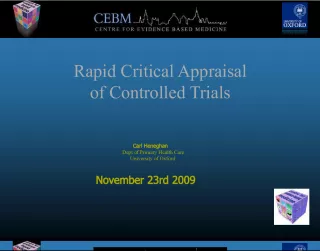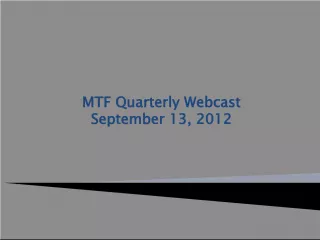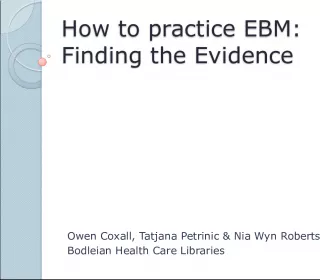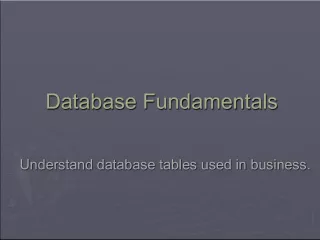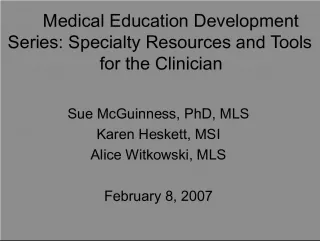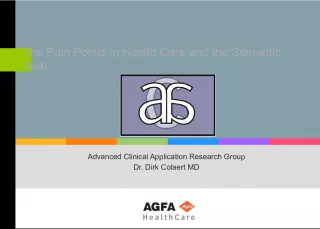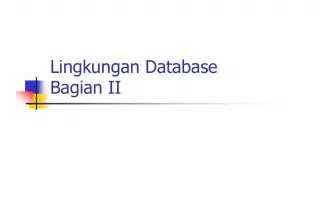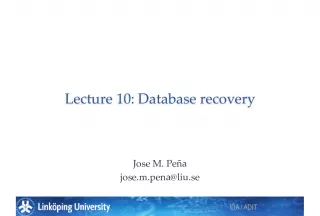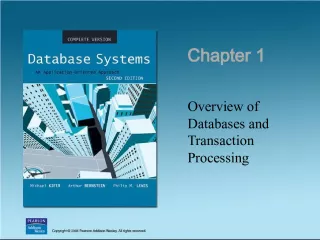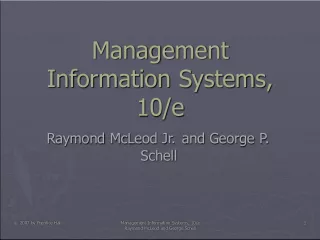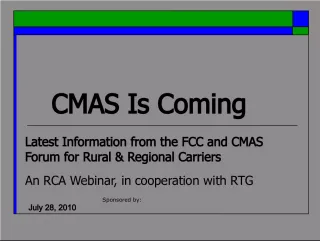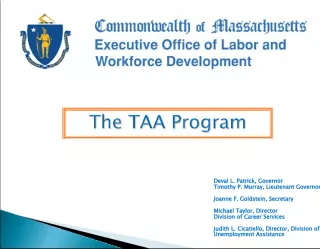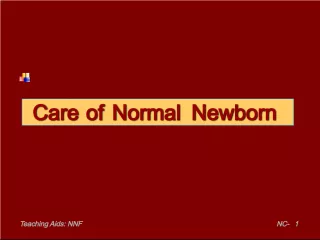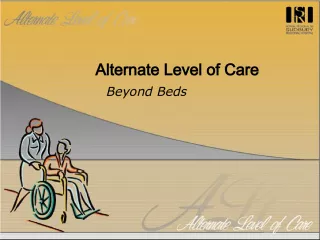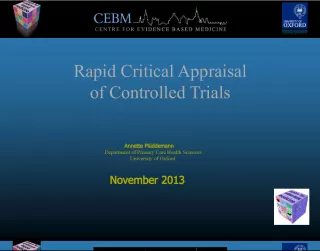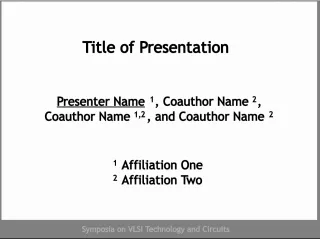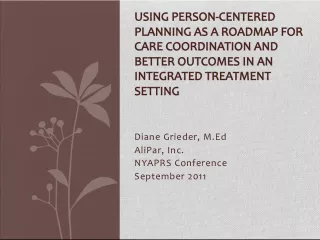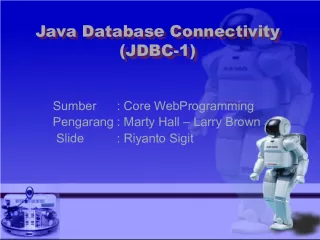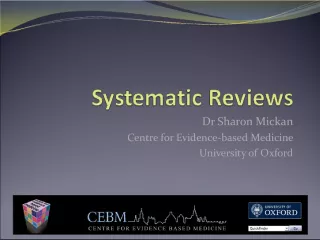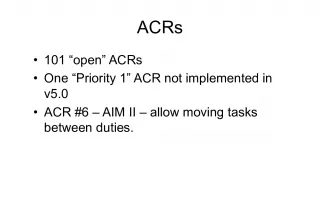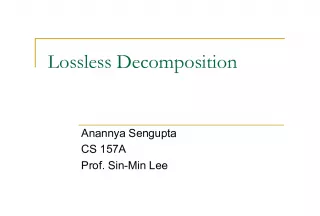Updates on 2012 Guidelines and Database Changes in Critical Care Medicine
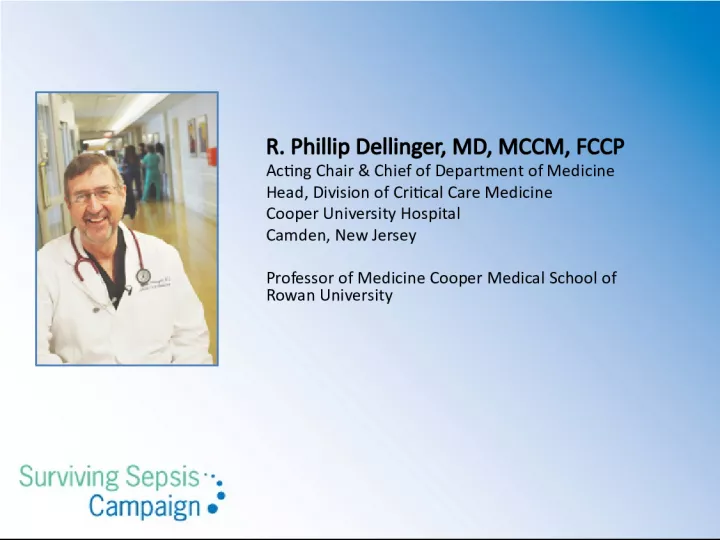

Learn about the latest changes in critical care medicine guidelines and database updates, as explained by Dr. R. Phillip Dellinger, Chief of Department of Medicine and Professor of Medicine at Cooper Medical School of Rowan University.
- Uploaded on | 0 Views
-
 violet
violet
About Updates on 2012 Guidelines and Database Changes in Critical Care Medicine
PowerPoint presentation about 'Updates on 2012 Guidelines and Database Changes in Critical Care Medicine'. This presentation describes the topic on Learn about the latest changes in critical care medicine guidelines and database updates, as explained by Dr. R. Phillip Dellinger, Chief of Department of Medicine and Professor of Medicine at Cooper Medical School of Rowan University.. The key topics included in this slideshow are R. Phillip Dellinger, critical care medicine, guidelines, database updates, Cooper University Hospital, Cooper Medical School of Rowan University,. Download this presentation absolutely free.
Presentation Transcript
1. R. Phillip Dellinger, MD, MCCM, FCCP Acting Chair & Chief of Department of Medicine Head, Division of Critical Care Medicine Cooper University Hospital Camden, New Jersey Professor of Medicine Cooper Medical School of Rowan University
2. Whats new with the 2012 guidelines and associated changes in the database R. Phillip Dellinger MD, MCCM Christa A. Schorr RN, MSN, FCCM Cooper Medical School Rowan University Cooper University Hospital Camden, NJ
3. Potential Conflicts of Interest Neither has direct or indirect potential financial conflict of interest as to any material presented in this presentation As to potential intellectual conflict of interest both hold leadership positions in Surviving Sepsis Campaign
4. R. Phillip Dellinger, Mitchell M. Levy, Andrew Rhodes, Djillali Annane, Herwig Gerlach, Steven M. Opal, Jonathan E. Sevransky, Charles L. Sprung, Ivor S. Douglas, Roman Jaeschke, Tiffany M. Osborn, Mark E. Nunnally, Sean R. Townsend, Konrad Reinhart, Ruth M. Kleinpell, Derek C. Angus, Clifford S. Deutschman, Flavia R. Machado,Gordon D. Rubenfeld, Steven A. Webb, Richard J. Beale, Jean-Louis Vincent, Rui Moreno, and the Surviving Sepsis Campaign Guidelines Committee including the Pediatric Subgroup. Crit Care Med 2013; 41:580-637 Intensive Care Medicine 2013; .. Surviving Sepsis Campaign: International guidelines for management of severe sepsis and septic shock: 2012
5. Currently Funded with a Gordon and Betty Moore Foundation Grant No direct or indirect industry support for guidelines revision
6. Grading Quality of Evidence GRADE System A- high quality B- intermediate C- low D- very low Case series or expert opinion Upgrade capability Ungraded (UG) recommendation
7. Grading Strength of Recommendation GRADE System 1- strong recommendation We recommend 2- weak recommendation We suggest
8. Early Screening and a Performance Improvement Program
9. Antibiotic Therapy We recommend that intravenous antibiotic therapy be started as early as possible and within the first hour of recognition of septic shock (1B) and severe sepsis without septic shock (1C). (Best Practice versus Stand of Care)
10. Resuscitation of Sepsis Induced Tissue Hypoperfusion Recommend MAP 65 mm Hg
11. FLUID THERAPY
12. Fluid therapy 1. We recommend crystalloids be used in the initial fluid resuscitation of severe sepsis (Grade 1B).
13. Fluid therapy 1. We suggest the use of albumin in the fluid resuscitation of severe sepsis and septic shock when patients require substantial amounts of crystalloids (Grade 2C).
14. Fluid challenge Initial fluid challenge in sepsis-induced tissue hypoperfusion (hypotension or elevated lactate) A minimum of 30ml/kg of crystalloids (a portion of this may be albumin equivalent). (1B)
15. Vasopressors
16. Vasopressors 1. We recommend norepinephrine as the first choice vasopressor (Grade 1 B).
17. Vasopressors 2. We suggest epinephrine (added to and potentially substituted for norepinephrine) when an additional agent is needed to maintain blood pressure (Grade 2B).
18. Vasopressors 3. Vasopressin .03 units/min can be added to norepinephrine with the intent of raising MAP to target or decreasing or decreasing norepinephrine dosage. (UG)
19. Phenylephrine Pure vasopressor and in general not recommended
20. Sepsis Induced Tissue Hypoperfusion (Recommend Quantitative Resuscitation) Requirement for vasopressors after fluid challenge or Lactate 4 mg/dL
21. Initial Resuscitation of Sepsis Induced Tissue Hypoperfusion Recommend Insertion central venous catheter Central venous pressure: 812 mm Hg Higher with altered ventricular compliance or increased intrathoracic pressure Grade 1C
22. Arterial Systolic Pressure Variation Parry-Jones, et al. Int J Respir Crit Care Med 2003;2:67
23. P art A A t Effect on Stroke Volume
24. Effect on Stroke Volume
25. Effect on Cardiac Filling
26. Initial Resuscitation of Sepsis Induced Tissue Hypoperfusion Recommend Insertion central venous catheter ScvO2 saturation (SVC) 70% Grade 1C
27. Lactate Clearance In patients with elevated lactate levels as a marker of tissue hypoperfusion we suggest targeting resuscitation to normalize lactate as rapidly as possible (grade 2C).
